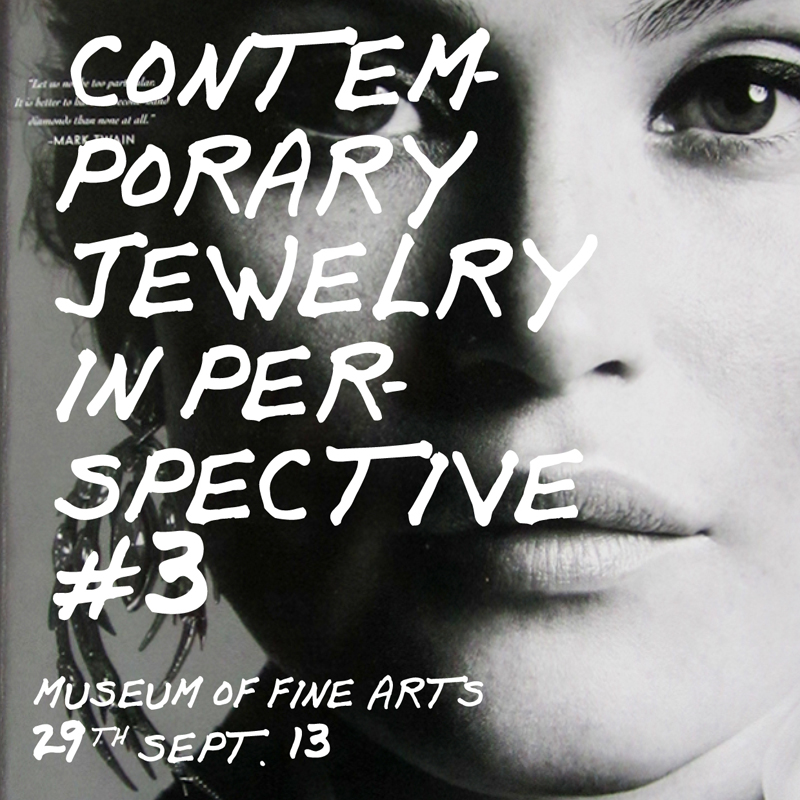Damian Skinner, Art Jewelry Forum Speakers Tour, University of the Arts, Philadelphia, Pennsylvania, September 23, 2013
Dr. Damian Skinner, renowned writer, contemporary jewelry critic, and editor of Contemporary Jewelry in Perspective, recently led a workshop for students in the jewelry/metals program at the University of the Arts in Philadelphia, Pennsylvania. His intent was to reshape the way makers think about the concept of jewelry. He challenged our ideas about the fundamentals of our craft, made us take a second look at concepts we had always accepted automatically, and encouraged us to recognize the limitations of our workspace as well as the institution in which it is contained. He did all this without once touching a piece of metal, a gemstone, or a soldering torch.
Directing us to stand in a circle, Dr. Skinner instructed each student to look into the eyes of the people to either side. Thus, he created the links in a chain for the first “necklace” we made that day, smashing our literal interpretation of the word jewelry. This opened the potential for our craft in infinite directions. We learned that we do not have to accept limits and suppositions, and perhaps most importantly, we began to understand how to detect these subtle boundaries while exploring how we might break through them.
Dr. Skinner also pointed out that the very rooms in which we work are arbitrary workstations, appointed for us by the academic institution. He encouraged us to recognize that our jeweler’s benches and soldering stations are among the subtle chains anchoring us to an imposed point-of-view. He insisted that inspiration and ideas come from our experiences in life outside the studio. Our workstations are the world, and they are as limitless as our minds. Dr. Skinner also pointed out that our creativity and our options are severely constrained by our curriculum and assignments. It was an interesting experience to be gathered inside the UArts metal studio and to question the institution’s impact on our reality.
As the day progressed, Dr. Skinner continued to challenge our ideas about scale, presentation, and context. He asked us to think about what jewelry does, not only for us, but also to us. We learned that it was our responsibility as makers to consider these things as we work. We also learned the importance of understanding the difference between “good” craftsmanship and “appropriate” craftsmanship.
For our final workshop project, we were sent out into the city to gather items we might use as the basis for a future jewelry project. From straws to stones, leaves to flowers, bits of discarded metal to dismembered doll parts, and even the carcass of a decapitated bird, a dizzying array of objects were produced from various places in our environment. Methodically, Dr. Skinner went from collection to collection, asking questions, analyzing, and encouraging us to think in new ways about the groupings and the items themselves. No object was too mundane or grotesque, no grouping too simple. Dr. Skinner showed us that literally everything around us was worthy of thought and consideration. He implored us to explore connections between things, to ask ourselves why we would pick one thing above another, why we would pass over something else, and why we would go to one place but not another. The motto of the day was not only to question everything, but also to question our questions.

In addition, Dr. Skinner shared with us works by some important craftspeople from around the world, and he confounded us when we realized that none of us knew about them at all. He explained that this was due to the biases of those who write about craft and to the severe impact those writers have on our industry. Skinner impressed upon us that those who harness the power of the written word get to decide who in the craft world thrives and who is assigned to anonymous oblivion. Choosing how to engage in this issue is a conundrum we all face, but getting us to see the problem in the first place is an important step.
Throughout the day, Dr. Skinner worked with us to illuminate issues that exist outside the current boundaries of our consciousness. To say that it was enlightening would be an understatement. His work with us will continue to influence how we approach our creative practices and how we perceive and relate to our realities as makers and as human beings.




